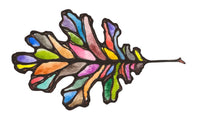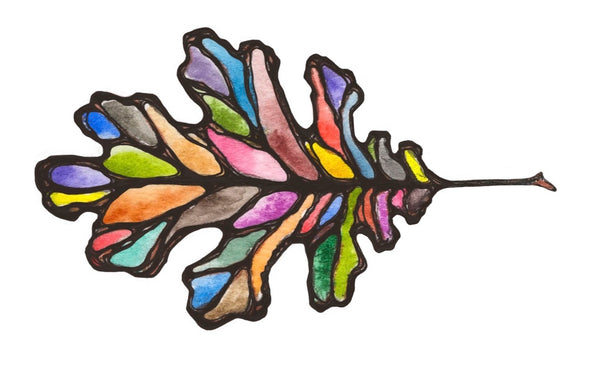
Painting Project: Palette Portrait
Here's a painting project idea that you can file away for a rainy day when you're at a loss as to what to paint -- or to help get you painting today.
The basic idea: Paint a portrait of your watercolor palette.
This is a fun way to shift the spotlight onto your tools - objects that are ever-present during art-making but always off-stage and in the background. By painting your tools, you will be turning your artistic focus and observations on something surprisingly personal. Don't be too shocked to see yourself in your color box. To a certain extent, every artist's supplies are a reflection of who they are and their particular style.
Traditionally, art supplies have been depicted to add further context to a subject or scene, as in the case of artists' self portraits. Take, for instance, this portrait by Van Gogh:
 "Self Portrait as a Painter" by Vincent Van Gogh, Van Gogh Museum
"Self Portrait as a Painter" by Vincent Van Gogh, Van Gogh Museum
Or this portrait (below) by Élisabeth Louise Vigée Le Brun. In both of these works, the artist's palette and brushes are present to give context, and to depict the subject as not just a person, but an artist.

"Self Portrait in a Straw Hat" by Élisabeth Louise Vigée Le Brun
Just think how different each portrait would be without the presence of the palettes and brushes - beyond context, they add interest.
In the advent of the internet and digital photography, images are everywhere - and so is artwork. We have arguably seen the artist move into the background and focus shift to imagery and to the tools themselves. We can likely thank modern photography for this (painting has long been supplanted as the primary documentary form), as well as the popularity of selfies (which are far more casual than formal portraits, which were crafted to describe a person in a single image), and also the shift in focus from technical to subjective in the standard fine art educational curriculum (resulting in many graduates knowing less about art-making materials and their physical and chemical properties).
Great leaps in modern technology have also created an underground Renaissance for analog pursuits. Hand tools and timeless supplies are being seen with fresh eyes and revered in new ways as fingers and eyes itch for a break from the monotony of screens and keyboards.
Tools are gaining status as a subject by themselves. A modern example by illustrator Sophie Binder:

"Tools of the Trade" by Sophie Binder
And another by by Kristie Patterson:

Illustration by Kristy Patterson of Flying Shoes Art Studio
Any space where a person exists, any item that they regularly use, in time becomes a reflection of that person. Our bodies and personal appearance reveal pieces of who we are - through chipped gold nail polish maybe, coarse scarred hands, a colorful pair of mismatched socks, or the smile lines creeping across our face.
No two artist's palettes are alike once they've been used to create paintings. Paints are worn differently, colors mixed a certain way, and customizations made. In ways you may not yet have discovered, your color palette is intrinsically you.

A quick painting of my current palette. I experimented and tried to stay away from getting too architectural about the exact dimensions of my tin.
Project
The basic idea is to paint a portrait of your watercolor palette (and thus a portrait of YOU). Try to work in your own personal style. If you haven't yet fully developed your own style, then just paint in a way that makes you happy. Don't compare your work to anyone else - what delights you will be different. Relax, have fun, and experiment!
When approaching this project myself, I found it helpful to make a few sketches first just to play with lines and angles, and to get a little more familiar with the curving shapes of my paint tin.
You can make this project casual - a fun little painting exercise - or you can plan to make a formal finished painting to hang on the wall.

The supplies I used to create my watercolor palette portrait.
Supplies
Supplies for this project are fairly minimal, so the following list will be pretty straightforward and easily adapted to your personal methods and style.
1) Watercolor Palette - Whatever box of colors you use for your paintings will double as both supplies and subject. Try to represent your paint palette as it is when you are using it - or in the way it makes you happiest!
2) Paper - Any multimedia paper will work. If you want to make a painting to display or sell, make sure to choose a sturdy artist grade paper. You can also have fun with this project in your sketchbook. I used Strathmore Mixed Media 400 Series paper so that I could both sketch and play with some light washes. Use a heavier paper if you plan to use more water.
3) Brushes - Choose brushes appropriate to the scale of your paper.
I used:
- synthetic squirrel mop (Raphael Soft Aqua 3/0 Mop)
- synthetic detail round (Da Vinci Cosmotop Spin Size 1 Round)
- synthetic flat lifter (Rosemary & Co. Small Eradicator)
4) Pencil - Choose your favorite or whichever is appropriate. I usually use Faber Castell 9000 or Blackwing
5) Eraser - Again, go with a favorite or what is useful to the project!
6) Water Cup & Blotter - I like using a little ceramic cup with a lid and a vintage handkerchief. A jelly jar and scrap of paper towel will do nicely as well!
Instructions
1) Sketch - Set up your palette in a way that allows you to both paint from it and reference it. After you feel comfortable with your set-up - both for painting and viewing, make a sketch of your palette. Keep it loose and keep in mind you can always erase or start over if you don't like it. Remember that progress is slow - don't rush. Stay loose and have fun.
2) Paint - Now that you have your sketch it's time to add color! This part will be fun and different because you will be both depicting the colors in your palette - straight from the pan, and you will also be mixing and using your colors to paint the color box, any mixing area, and even your work surface. Enjoy the process of observing your own palette in minute detail!

A lovely little mess.
This is a project that is fun to repeat periodically. You will be surprised how your palette and personal style change and develop. It can also be an illustrative way to document particular color combinations that you have especially enjoyed.
I would love to see your painted palettes! Feel free to link to your work in the comments below or share on social media with #GandBpaintedpalette
And, as always,
Many Thanks & Happy Painting!


